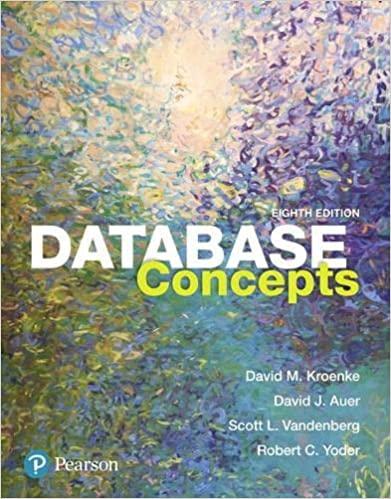Question
I want someone to explain this code to me, most of the code is explained in comments, but some isn't explained , please explain it.
I want someone to explain this code to me, most of the code is explained in comments, but some isn't explained, please explain it.
And I want to know which Functions, Arrays, Loops, Classes OR any other thing like that is used in this code, please mention these separately at last by giving reference to above code.
The proposal of the project of which the code is for your help is mentioned below:
Project Title:
Delaunay Triangulation of a Cartoon Character
Introduction:
The accurate prediction of pedestrian motion can be used to assess the potential safety hazards and operational performance at events where many individuals are gathered. Examples of such situations are sport and music events, cinemas and theatres, museums, conference centers, places of pilgrimage and worship, as well as street demonstrations. Evacuation from airplanes, ships, trains and buildings also represent cases where the prediction of pedestrian motion can be used advantageously.
The Delaunay triangulation is an automatic generation algorithm of a simplex mesh and is based on Definition 2 of the process. The end result is that all elements are triangular which forms the simplest constant strain elements. Delaunay triangulations are widely used in scientific computing in many diverse applications. While there are numerous algorithms for computing triangulations, it is the favorable geometric properties of the Delaunay triangulation that make it so useful.
Purpose:
Over the last decade, a considerable amount of research has been devoted to the computational prediction of pedestrian motion and crowd dynamics. The autonomy of a virtual human is defined by its capacity to perceive, act and decide of its actions. The behavior is usually described through several simple skills that can be mixed to generate more complex and credible behavior. Motion detection of any human is necessary in a lot of researches these days.
Working:
Our Goal is the motion detection of any character. This project will focus the Delaunay Triangulation technique for
Seed Point Analysis
Vision.Fore-ground
Frame Centroids & Corners
count of number of holes, edges, triangles
Tools:
MATLAB will be used to work on this project.
----------------------------------------------------------------------------------------------------
Code you need to explain:
clc;
close all;
clear;
%%
% Seed Point Analysis
% Vision.Foreground
% Frame Centroids & Corners
% count of number of holes, edges, triangles
videoReader = vision.VideoFileReader('C:\Users\ahmad\Downloads\Downloads (O)\cg\Delaunay Project\Videos\Video.mp4'); % Read sample matlab video
writerObj = VideoWriter('C:\Users\ahmad\Downloads\Downloads (O)\cg\Delaunay Project\Videos\OutputVideo','MPEG-4'); % Create video writer object
open(writerObj); % Open the video writer
NoOfSecs = 5;
NoOfFrames = NoOfSecs*30;
detector = vision.ForegroundDetector;
NoOfHoles = zeros (1, NoOfFrames);
NoOfEdges = zeros (1, NoOfFrames);
NoOfTrigl = zeros (1, NoOfFrames);
for count = 1:NoOfFrames % The number of frames to process
disp(count) % Display the current frame number
frame = step(videoReader); % Read the next video frame
frameGray = rgb2gray(frame); % Convert the frame to grayscale
if (count ==1)
BkFrame = frameGray;
end
foreground = step(detector, frameGray);
% Remove blobs smaller than 10 (Turn dark foreground to white)
BW_filled = bwareaopen(foreground, 100);
frameBW4 = imfill(BW_filled,'holes');
imshow (frame);
hold on;
% Extract Frame Centroids
s = regionprops(frameBW4,'centroid'); % Get the stats of the blobs
frameCentroids = cat(1,s.Centroid); % Exatract the centroids
% Compute Area of Shapes
paras = regionprops(frameBW4,frameGray,'Centroid','Area','FilledArea','MinIntensity');
area = cat(1,paras.Area);
% Extract Frame Corners
frameCorners = corner(frameGray,100);
% Plot Frame Centroids
[a, b] = size(frameCentroids);
% combine Frame Corners and Centroids
if (a > 2)
combineCorCenX = ([(frameCentroids(:,1))' (frameCorners(:,1))'])';
combineCorCenY = ([(frameCentroids(:,2))' (frameCorners(:,2))'])';
else
combineCorCenX = frameCorners(:,1);
combineCorCenY = frameCorners(:,2);
end
tri=delaunayTriangulation(combineCorCenX, combineCorCenY);
triplot (tri.ConnectivityList, combineCorCenX, combineCorCenY,'r') ;
plot(combineCorCenX,combineCorCenY,'wo','MarkerEdgeColor','k','MarkerFaceColor','w','MarkerSize',3);
nodes = tri.ConnectivityList ; % nodal connectivity matrix
coor = tri.Points ; % coordinates
ntri = size(nodes,1) ; % number of triangles
[NoOfHoles(1,count),~] = size(combineCorCenX);
NoOfTrigl(1,count) = ntri;
% Compute number of edges in Vortex Nerve
[NoOfEdges(1,count),~] = size(edges(tri));
BkFrame = frameGray;
writeFrame = getframe; % Capture the current displayed frame
pause(0.01);
close(); % Close the figure
writeVideo(writerObj,writeFrame.cdata); % Write the captured frame to the video
% end
end
close(writerObj); % Close the video writer object
Step by Step Solution
There are 3 Steps involved in it
Step: 1

Get Instant Access to Expert-Tailored Solutions
See step-by-step solutions with expert insights and AI powered tools for academic success
Step: 2

Step: 3

Ace Your Homework with AI
Get the answers you need in no time with our AI-driven, step-by-step assistance
Get Started


